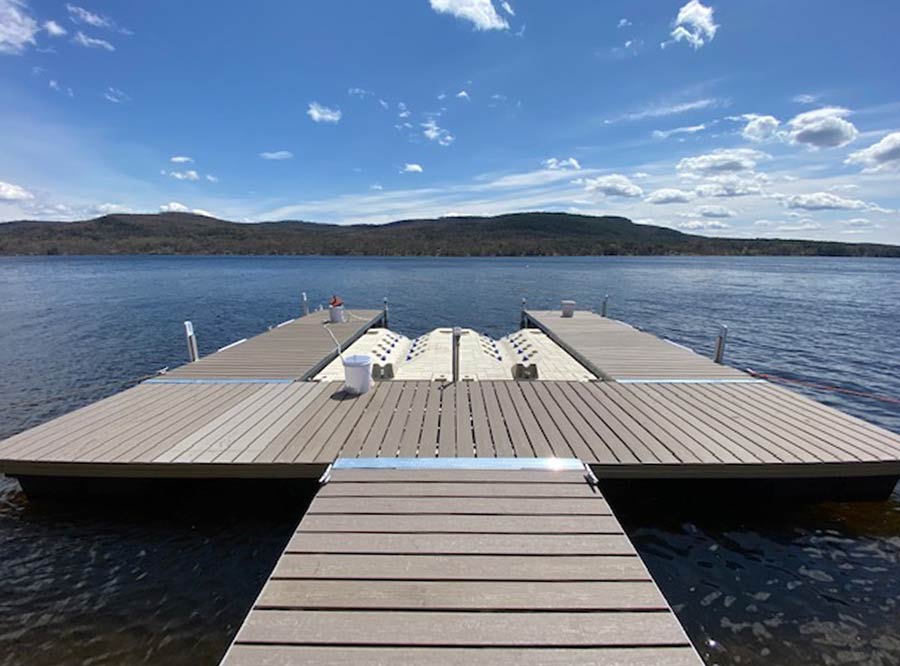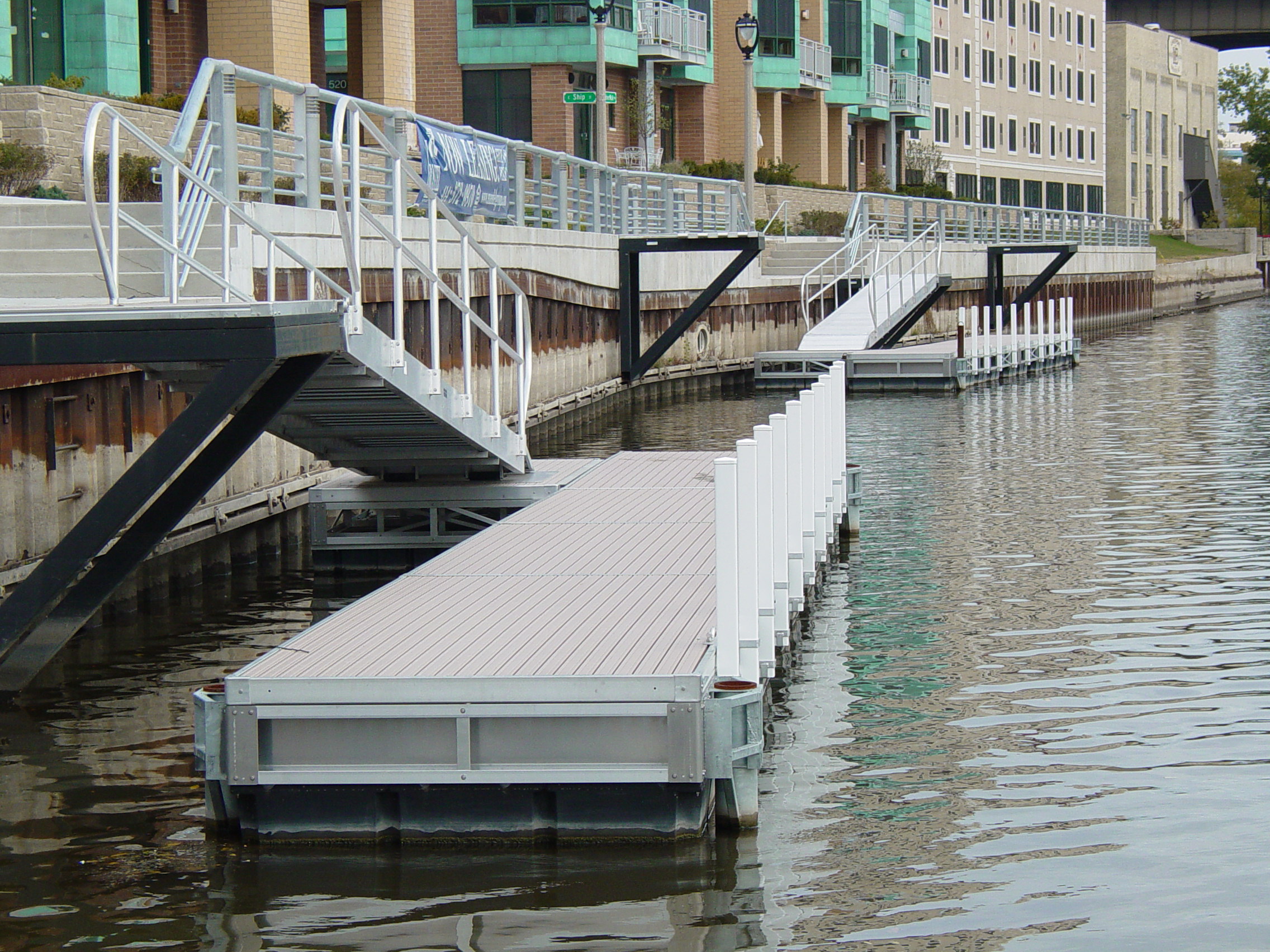Find the Perfect Floating Dock Builder to Bring Your Beachfront Vision to Life
Find the Perfect Floating Dock Builder to Bring Your Beachfront Vision to Life
Blog Article
Develop the Perfect Docking Option With Floating Docks
Floating docks present a versatile solution for a range of maritime requirements, adapting flawlessly to changing water levels and varied vessel types. As we check out the essential components that contribute to the effectiveness of floating docks, several vital variables regarding security and upkeep will emerge, elevating questions concerning how to optimize your docking experience.

Advantages of Floating Docks
Floating docks deal various benefits that make them a suitable option for different maritime applications. Unlike taken care of docks, floating docks increase and loss with the tide, making sure consistent availability for vessels.
Furthermore, floating docks are commonly easier and quicker to set up compared to traditional fixed frameworks. Their modular design allows for uncomplicated setting up and disassembly, helping with upkeep and relocation when needed. This flexibility is especially useful for short-lived applications or in settings where problems may alter.
Floating docks additionally tend to be more eco pleasant, as they reduce disturbance to the seabed and bordering water communities. Their resilient nature minimizes the danger of damage to marine life, promoting a healthier atmosphere. In addition, these docks can be personalized to fit numerous vessel sizes, ensuring that they fulfill certain functional demands - dock company.
Inevitably, the mix of flexibility, ease of installation, and environmental considerations makes floating docks an extremely effective option for a wide variety of maritime requirements.
Picking the Right Materials
Picking the proper materials for floating docks is crucial to make sure long life, toughness, and security. The selection of products straight affects the dock's performance in numerous environmental problems, including direct exposure to water, sunshine, and potential wear from aquatic web traffic.
Typical materials used for floating docks consist of aluminum, timber, and high-density polyethylene (HDPE) Light weight aluminum is lightweight, corrosion-resistant, and needs minimal upkeep, making it an outstanding option for durability. Its first expense can be greater contrasted to various other products.
Wood, while cosmetically attractive and giving a traditional appearance, can be susceptible to rot and pest damage if not effectively dealt with. Utilizing pressure-treated timber or normally sturdy varieties like cedar or redwood can reduce these issues.
HDPE is a popular choice due to its resistance to UV rays and chemicals, along with being environmentally friendly. floating dock services. It is lightweight and available in different shades, permitting personalization
Ultimately, the appropriate product choice will depend upon particular requirements, consisting of budget, desired aesthetic appeals, and environmental considerations. Mindful evaluation of these elements will lead to a successful and resistant floating dock solution.
Design Considerations for Stability
When making floating docks, guaranteeing stability is an essential element that can dramatically influence their capability and safety and security. Security in floating dock layout is affected by various factors, including buoyancy, weight distribution, and the arrangement of components.
Weight distribution is important; uniformly distributing tons across the dock avoids tilting and enhances security. This can be accomplished via critical placement of docking equipment, such as cleats and fenders, along with appropriate spacing of drifts. In addition, the measurements of the dock must be thoughtfully prepared. Larger designs can offer increased security, specifically in rough water conditions, while longer docks might need extra supports to prevent drooping.
One more key factor to consider is the environmental effect, including wave action and wind. Incorporating attributes such as sidewalls or skirting can assist alleviate the effects of ecological forces, keeping stability in adverse problems. Ultimately, a mix of thoughtful design, product selection, and understanding of ecological aspects will certainly yield a drifting dock that fulfills both security and security needs.
Setup Tips and Techniques

Next, secure the necessary authorizations and comply with neighborhood guidelines, which might dictate setup techniques and environmental considerations. Involve a certified service provider experienced in floating dock setups if required. Usage top notch products developed for marine settings to boost toughness and longevity.
When positioning the dock, align it parallel to the shoreline to assist in easy accessibility. Ensure that the anchoring system is robust, employing cinder block or helical supports to stabilize the dock versus wind and wave activity. It's important to account for seasonal water degree changes, including possible ice movement in cooler climates.
Throughout the setup, verify the dock's floatation and stability prior to wrapping up the anchoring. Regularly evaluate the installation for any type of signs of wear or damages. By following these pointers and methods, you can achieve a safe, functional, and cosmetically pleasing floating dock setup that fulfills your requirements.
Maintenance and Care Standards
Caring and maintaining for floating docks is important to lengthening their lifespan and making certain secure usage. Regular assessments need to be performed to identify any indications of wear, damage, or marine growth. Try to find splits, loosened installations, or blemished locations on the dock's useful site surface area, as these concerns can endanger structural integrity.
Cleaning up is essential. Make use of a pressure washer to get rid of algae, barnacles, and particles, which can gather with time. For stubborn development, take into consideration eco-friendly cleaner that will not hurt water life.
Furthermore, check the mooring lines and anchors frequently to ensure they are free and secure from deterioration. Change any type of frayed or damaged lines promptly to keep security.
During extreme weather, such as tornados or freezing conditions, take precautionary measures. Safeguard the dock with extra mooring lines and, if possible, remove any kind of removable elements to avoid damages.
Final Thought
In verdict, the application of floating docks offers a flexible and reliable docking solution appropriate for numerous maritime applications. With proper setup and normal upkeep, floating docks can supply reliable and efficient docking experiences for a large array of my blog vessels.
As we explore the necessary elements that contribute to the efficiency of floating docks, numerous key aspects pertaining to security and maintenance will emerge, raising questions regarding exactly how to maximize your docking experience. Unlike fixed docks, floating docks rise and fall with the tide, making sure regular accessibility for vessels.When developing floating docks, guaranteeing stability is an essential element that can dramatically affect their functionality and safety. Stability in floating dock design is influenced by different variables, including buoyancy, weight distribution, and the setup of parts. Ultimately, a combination of thoughtful design, product option, and understanding of ecological variables will certainly generate a drifting dock that satisfies both stability and safety requirements.
Report this page